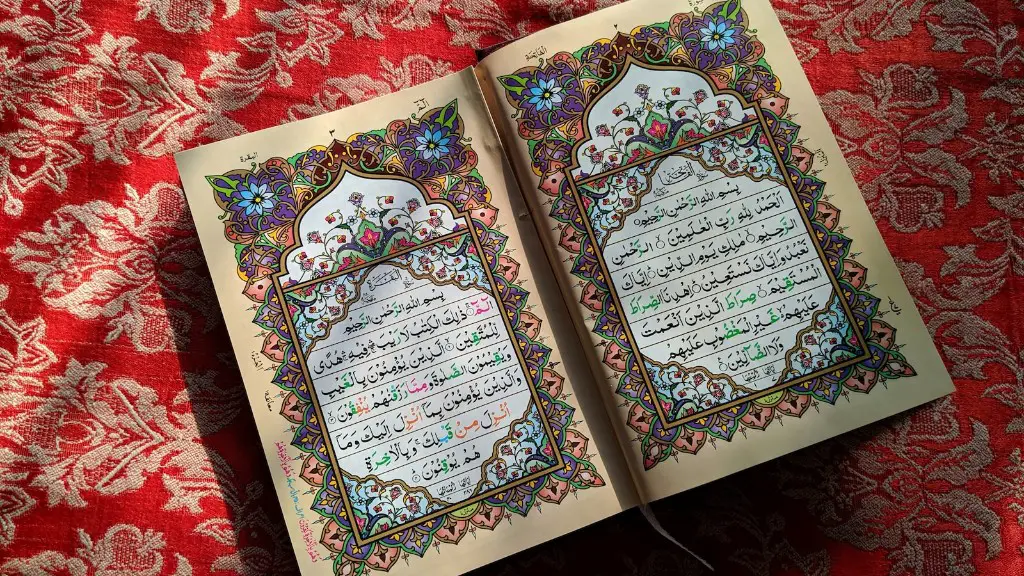Origins of Preserver God in Hinduism
Hinduism is an ancient religion that developed in the Indian sub-continent thousands of years ago. It is generally accepted that Hindus believe in a supreme god, Brahman, and that Brahman is made up of three gods: a creator god, Brahma; a preserver god, Vishnu; and a destroyer god, Shiva. The preserver god in Hinduism is known as Vishnu, and is one of the three main gods in the Hindu pantheon.
Vishnu is commonly known as the preserver god because of his role as the guardian of the universe and his role in helping to restore balance and order in times of chaos and destruction. He is often depicted with four arms, holding one or more objects. His main symbols are the conch shell, discus, mace, and a lotus flower, each of which represent his power and his ability to protect and restore balance to the world.
Vishnu is often represented as a blue-skinned god with a gentle and benevolent face, usually adorned with a crown. He is associated with light, healing, fertility and life-giving energy, and is most often worshipped alongside his consort Lakshmi, the Goddess of wealth and prosperity.
Vishnu is said to reside in his heavenly abode, Vaikunta, and is believed to have a series of incarnations, called avatars, that have taken a human form on earth to help people in times of need and protect them from evil. The most popular of these avatars are Rama, Krishna and Vamana. In addition to his avatars, Vishnu is often associated with several festivals and holidays celebrated by Hindus.
Vishnu is believed to possess great strength, intelligence, and knowledge, and is regarded to be noble, compassionate, and an embodiment of dharma (righteousness). He is worshipped by Hindus all over the world in some form or another, and is seen as a symbol of salvation and hope.
Symbology of The Preserver God in Hinduism
The preserver god of Hinduism, Vishnu, is represented by several symbols that are meant to represent his powers and qualities. The most common of these is the conch shell, which is a symbol of his ability to create and restore balance in the universe. The conch shell is also a symbol for the cosmic sound of creation, which Vishnu is said to have created in order to usher in a new age of prosperity and peace.
The discus is another symbol associated with Vishnu and represents his power to protect and preserve the universe. The mace is a symbol of his strength and power, while the lotus flower symbolizes purity and rebirth.
The color blue is often associated with Vishnu, as it is believed to represent his infinite knowledge and wisdom, while his four-armed form is representative of his omnipresence. Like his other two counterparts, Brahma and Shiva, Vishnu is also often depicted with a third eye that symbolizes his ability to see and know all things.
Popular Story of the Preserver God in Hinduism
The most popular story of Vishnu is the Boar Avatar, the fourth incarnation of Vishnu. In this story, Vishnu takes on the form of a powerful boar in order to protect and restore balance to the universe.
According to the story, the universe was in a chaotic state due to an evil asura (demon) named Hiranyaksha who had imprisoned the Earth goddess, Bhu Devi, in the depths of the cosmic ocean. Vishnu descended from the heavens in the form of a wild boar and battled with Hiranyaksha and eventually defeated him. After rescuing Bhu Devi, Vishnu restored balance and returned the universe to order.
The Role of Preserver God in Hinduism
The preserver god in Hinduism, Vishnu, plays a vital role in maintaining cosmic balance and protecting the universe from evil. He is seen as the protector of dharma (righteousness) and is often represented as an ascetic form of blue with four arms.
Vishnu’s four arms are meant to symbolize his omnipresence and his ability to protect and preserve the universe. He is associated with light, healing, fertility, and life-giving energy, and is often seen as a symbol of salvation and hope.
Vishnu is believed to intervene on behalf of his devotees when they are in times of need or danger, and he is thought to possess great strength and intelligence that can be used for protection and guidance. Vishnu is often worshipped alongside his consort Lakshmi, the Goddess of wealth and prosperity.
Symbolic Representation of Preserver God in Hinduism
Vishnu’s main symbols are the conch, discus, mace, and lotus. The conch shell is a symbol of his ability to create and restore balance; the discus is a representation of his power to protect and preserve the universe; the mace is a symbol of his strength and power; and the lotus flower symbolizes purity and rebirth.
In addition to these symbols, Vishnu can also be depicted with four arms, which represent his omnipresence and ability to protect and preserve the universe. He is also represented with a third eye, which is believed to be symbolic of his ability to see and know all things.
Worship of Preserver God in Hinduism
Vishnu is one of the most widely worshipped gods in the Hindu religion. Hindus worship Vishnu in the form of idols, such as images of Rama, Krishna, or Vamana and in the form of mantras and meditations.
Vishnu is also known for his avatars – or incarnations as humans on earth – which are believed to have taken a physical form in order to help people in times of need and protect them from evil. This is one of the reasons why Vishnu is so widely worshipped in Hinduism.
Another reason Vishnu is so widely worshipped is because of his association with several festivals and holidays celebrated by Hindus. Vishnu is often associated with joy, abundance and peace and is seen as a symbol of salvation and hope.
Significance of Preserver God in Hinduism
The preserver god in Hinduism, Vishnu, is an important and highly revered figure in Hinduism. He is seen as the guardian of the universe and the protector of dharma (righteousness). Vishnu is believed to possess incredible strength, intelligence, and knowledge, and is regarded to be noble, compassionate, and an embodiment of dharma.
Vishnu is associated with light, healing, fertility and life-giving energy, and is often depicted with four arms and a third eye, both of which are meant to symbolize his omnipresence and ability to protect and preserve the universe. He is worshipped by Hindus all over the world in some form or another and is seen as a symbol of salvation and hope.
Interpretation of Preserver God in Hinduism
The preserver god in Hinduism, Vishnu, is an important and highly regarded figure in Hinduism. Vishnu is seen as the protector of dharma (righteousness) and is believed to possess strength, intelligence, and intuitive knowledge. His symbols are used to represent his power to create, protect and restore the balance of the universe.
Vishnu is also worshipped for his ability to intervene on behalf of his devotees in times of need, and is associated with light, healing, fertility and life-giving energy. Vishnu is commonly seen as a symbol of salvation and hope, and is often depicted with four arms and a third eye that symbolize his omnipresence and ability to protect the universe from harm.
Authentic Representation of Preserver God in Hinduism
The preserver god in Hinduism, Vishnu, is a symbol of divine energy and protection. He is seen as the protector of dharma (righteousness) and is believed to possess strength, intelligence, and intuitive knowledge. He is associated with light, healing, fertility and life-giving energy, and is often depicted with four arms and a third eye that symbolize his omnipresence and ability to protect the universe from harm.
In Hinduism, Vishnu is worshipped in various ways through rituals, festivals, and meditations. He is also worshipped for his ability to intervene on behalf of his devotees when they are in times of need and danger, and is seen as a symbol of salvation and hope.
Vishnu is an important and highly regarded figure in Hinduism and is believed to embody the principle of Dharma – righteousness, justice and balance in the world. His role as a preserver – to protect and restore the balance of the universe – is integral to Hindus and is essential to maintaining cosmic order.

